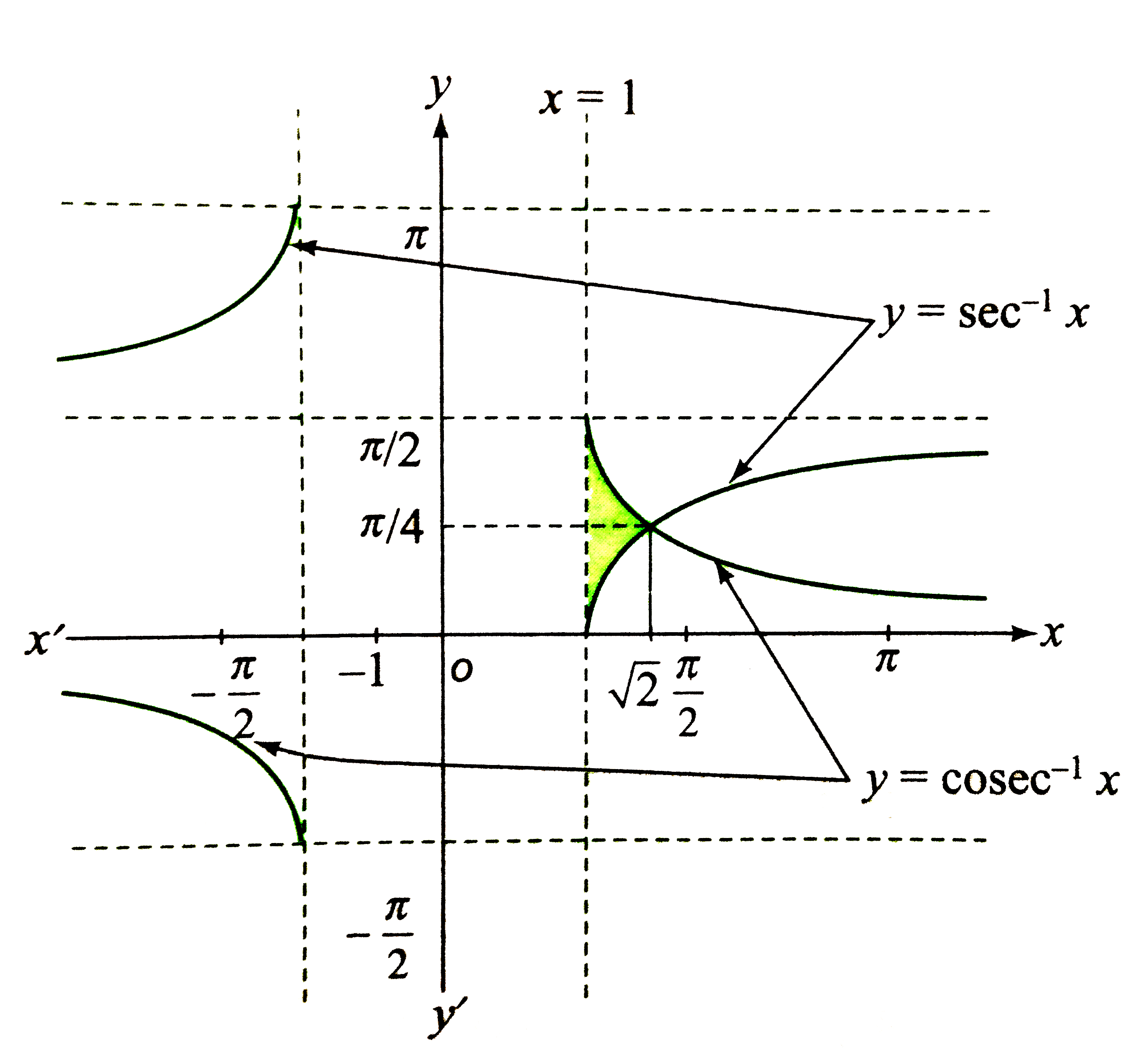Area bounded by , and line x=1 is given bySolution in Tamil
sq. units
sq. units
sq. units
None of these
The correct Answer is:A

Integrating along x-axis, we get
Integrating along y-axis, we get
sq. units.
Topper's Solved these Questions
- BOOK - CENGAGECHAPTER - AREAEXERCISE - Exercise (Multiple)10videos
AREA
- BOOK - CENGAGECHAPTER - AREAEXERCISE - Exercise (Comprehension)21videos
AREA
- BOOK - CENGAGECHAPTER - AREAEXERCISE - Exercise 9.37videos
AREA
- BOOK - CENGAGECHAPTER - APPLICATIONS OF DERIVATIVESEXERCISE - Subjective Type2videos
APPLICATIONS OF DERIVATIVES
- BOOK - CENGAGECHAPTER - AREA UNDER CURVESEXERCISE - Question Bank10videos
AREA UNDER CURVES
Similar Questions
Let A(k) be the area bounded by the curves y=x2−3 and y=kx+2 The range of A(k) is (10√53,∞) The range of A(k) is (20√53,∞) If function k→A(k) is defined for k∈[−2,∞ ), then A(k) is many-one function. The value of k for which area is minimum is 1.
03:52View SolutionLet Ar be the area of the region bounded between the curves y2=(e−kr)x(where k>0,r∈N) and the line y=mx(where m≠0), k and m are some constants
A1,A2,A3,… are in G.P. with common ratio02:38View SolutionFind the continuous function f where (x4−4x2)≤f(x)≤(2x2−x3) such that the area bounded by y=f(x),y=x4−4x2. then y-axis, and the line x=t, where (0≤t≤2) is k times the area bounded by y=f(x),y=2x2−x3,y−aξs, and line x=t(where0≤t≤2).
01:30View SolutionProve that for λ>1, the equation xlogx+x=λ has least one solution in [1,λ].
01:52View SolutionThe area of the region (s) enclosed by the curves y=x2 and y=√|x| is
04:26View SolutionArea bounded by y=sec^(-1)x,y=cot^(-1)x and line x=1 is given by
05:20View SolutionFind the area of the figure bounded by the curve y=sin−1x, the lines x=0 and y=π2.
06:48View Solutioncosec−1x=sec−y হলে (sin−1(1x)+sin−1(1y)) -এর মান হবে--
04:21View Solutiontan−1x−cot−1x=tan−1(1√3) என்ற சமன்பாட்டிற்கு
02:00View SolutionArea bounded by y=sec−1x,y=cot−1x and line x=1 is given by
01:36View SolutionFind the area bounded by the curve
y=tan−1x with X-axis from x=0 and x=105:21View SolutionProve the tan(tan−1x+tan−1y+tan−1z)=cot(cot−1x+cot−1y+cot−1z)
01:36View SolutionIf y=xsin−1x+xcos−1x, then what is dydx?
01:48View SolutionFind the derivate of y = e^(sec^-1x) .
02:45View SolutionFind the derivate of y =e^(cot^-1x) .
01:20View Solution

